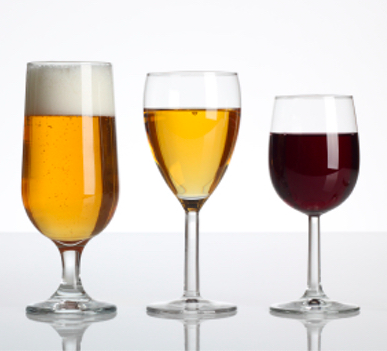Could alcohol consumption decrease the risk of gallstone disease? A recent meta-analysis1, published in the scientific journal Gut and Liver, confirms that alcohol consumption is associated with a decreased risk of gallstone disease; indicating alcohol could have a preventive effect. But whether there is an optimal alcohol dose remains unclear.
What is already known? Multiple meta-analyses found an inverse association between alcohol consumption and the development of gallstone disease.2,3 The relationship was found to be linear with a 12% risk reduction with each additional 10 g alcohol per day (one standard alcoholic consumption).3
What does this study add? This meta-analysis confirms the previous findings and intends to assess the optimal amount of alcohol to reduce gallstone disease risk.
The researchers included 24 studies in this meta-analysis: 16 case-control studies with more than 100.000 participants and 8 cohort studies with 2.4 million person-years.
Protective effect
This meta-analysis confirms the possible protective effect of alcohol on gallstone disease (GSD). There was a 4% risk reduction with light alcohol consumption compared to non-drinkers, and even a 34% risk reduction with high alcohol consumption (see table).
| Alcohol consumption. Risk reduction | |
|---|---|
|
Light |
4% |
|
Moderate |
20% |
|
High |
34% |
Optimum dose?
When really assessing the dose-response, there were some inconsistent findings. There seems to be an optimum protective effect at 28g/day after which the risk reduction more or less stabilizes. However, when looking at the case-control and cohort studies separately, this trend was only found with the case-control studies; in the cohort studies the relationship seems linear. So, what should we believe? The authors acknowledge that cohort studies have a higher level of evidence, thus suggesting a linear trend. However, they still refer to the 28g/day in their conclusion.
Possible mechanism
How can we explain the possible protective effect of alcohol against gallstone formation? Former studies explained the underlying mechanisms in several ways: decreased cholesterol saturation4,5; increased high-density lipoprotein (HDL)6; and increased gallbladder motility.7
Gallstone disease
With gallstone disease, there are little stones out of bile components in either the gallbladder or the common bile duct. A characteristic symptom of gallstones is a gallstone attack, in which a person may experience fierce pain in the upper-right side of the abdomen, often accompanied by nausea and vomiting. However, you can also be symptom-free for years with so called ‘silent stones’. The prevalence is reported to be 10-15% in adults with risk factors including old age, female gender, obesity, metabolic syndrome, and chronic liver disease.8
Strengths
- Meta-analysis
- Evidence confirms results from previous meta-analyses
- Amount of alcohol clearly defined
- Dose-response analysis included
Limitations
- Studies were heterogenous
- ‘sick-quitters’ not treated as a separate group
References
1: Cha, B. H., Jang, M. J., & Lee, S. H. (2019). Alcohol Consumption Can Reduce the Risk of Gallstone Disease: A Systematic Review with a Dose-Response Meta-Analysis of Case-Control and Cohort Studies. Gut and liver, 13(1), 114.
2: Shabanzadeh, D. M., & Novovic, S. (2017). Alcohol, smoking and benign hepato-biliary disease. Best Practice & Research Clinical Gastroenterology, 31(5), 519-527.
3: Wang, J., Duan, X., Li, B., & Jiang, X. (2017). Alcohol consumption and risk of gallstone disease: a meta-analysis. European journal of gastroenterology & hepatology, 29(4), e19-e28.
4: Thornton, J., Symes, C., & Heaton, K. (1983). Moderate alcohol intake reduces bile cholesterol saturation and raises HDL cholesterol. The Lancet, 322(8354), 819-822.
5: Schwesinger, W. H., Kurtin, W. E., & Johnson, R. (1988). Alcohol protects against cholesterol gallstone formation. Annals of surgery, 207(6), 641.
6: Langer, R. D., Criqui, M. H., & Reed, D. M. (1992). Lipoproteins and blood pressure as biological pathways for effect of moderate alcohol consumption on coronary heart disease. Circulation, 85(3), 910-915.
7: Tsai, T. J., Chan, H. H., Lai, K. H., Shih, C. A., Kao, S. S., Sun, W. C., … & Chen, W. C. (2018). Gallbladder function predicts subsequent biliary complications in patients with common bile duct stones after endoscopic treatment?. BMC gastroenterology, 18(1), 32.
8: Stinton, L. M., & Shaffer, E. A. (2012). Epidemiology of gallbladder disease: cholelithiasis and cancer. Gut and liver, 6(2), 172.

